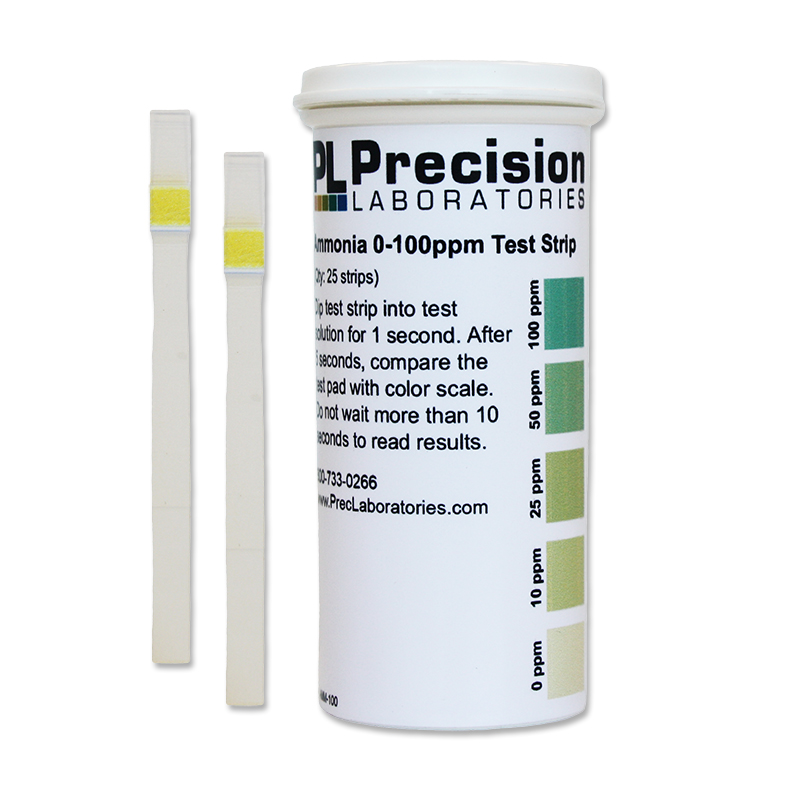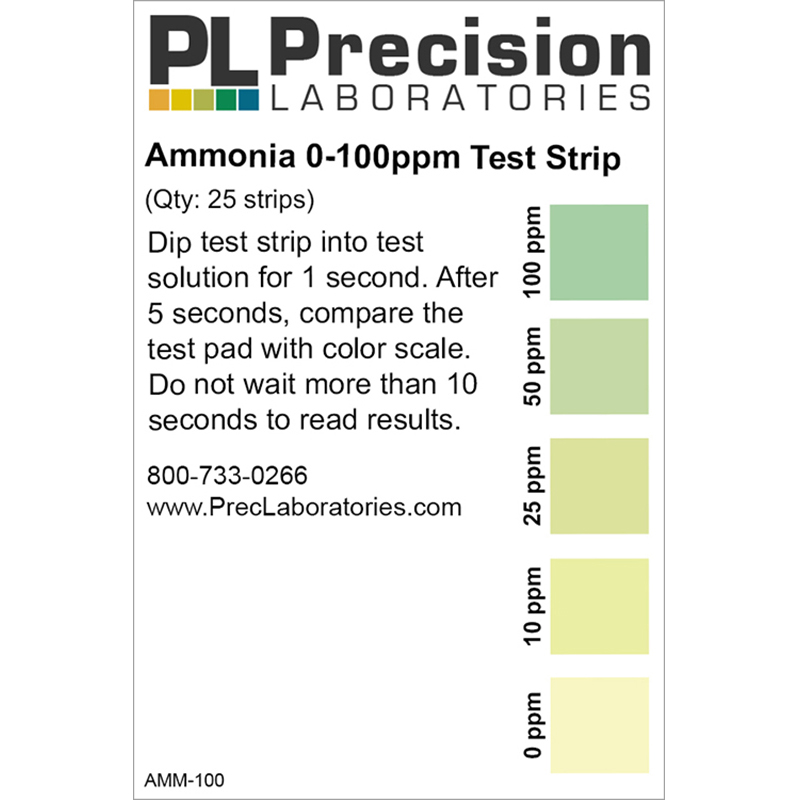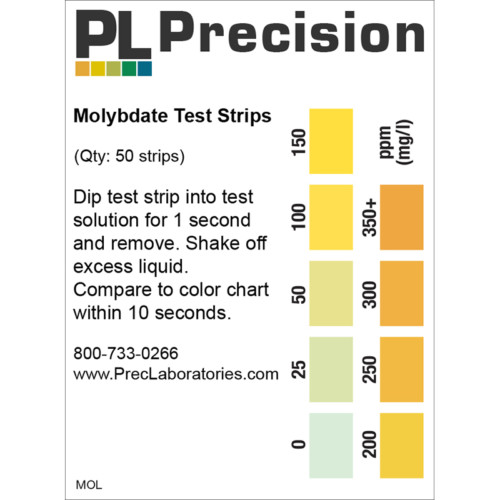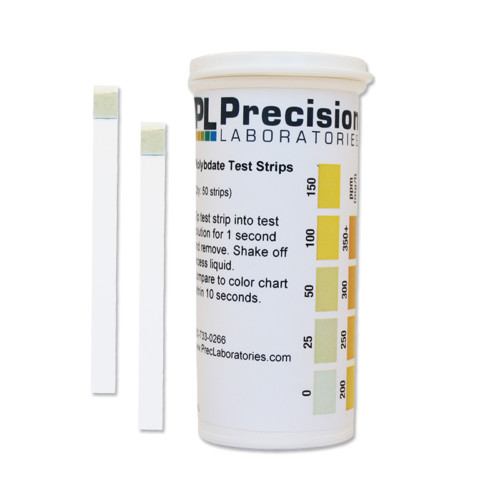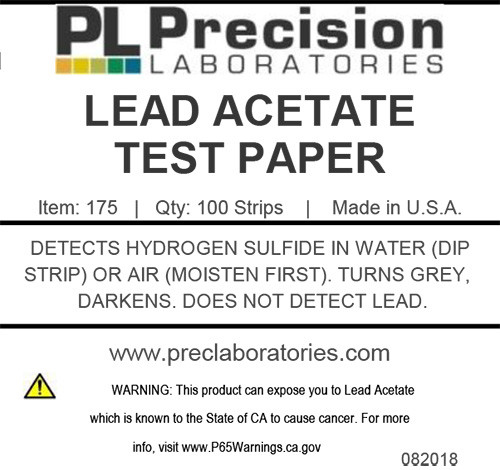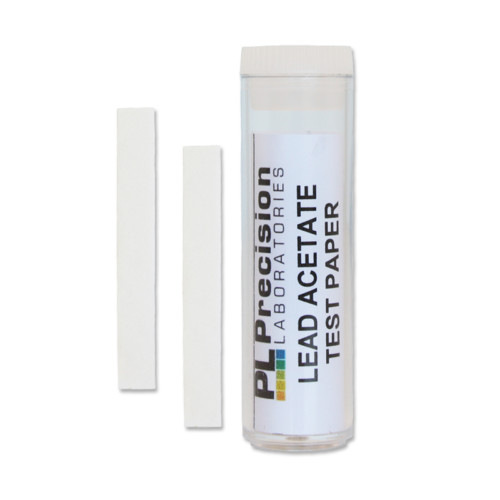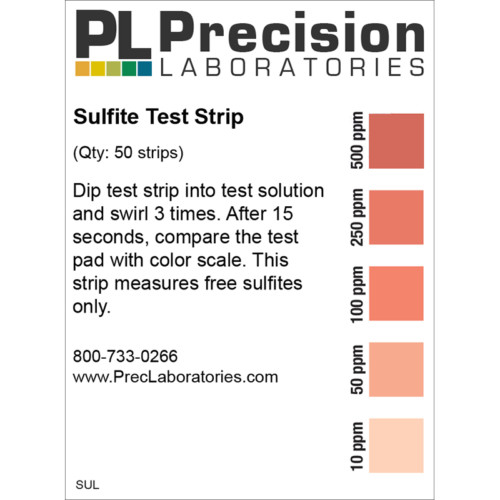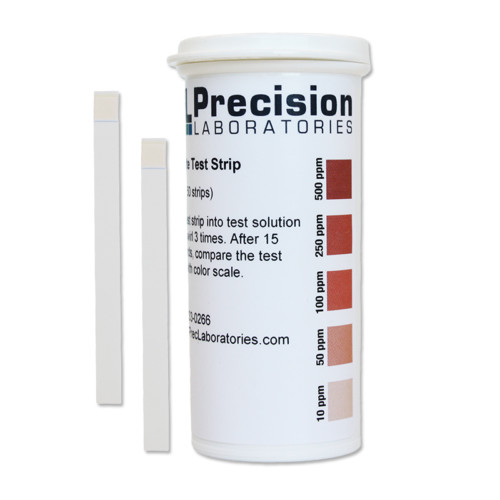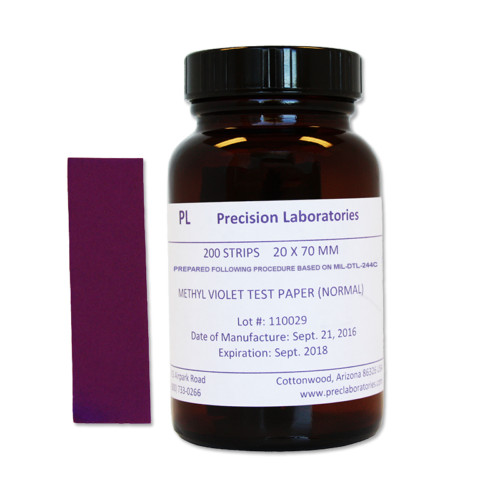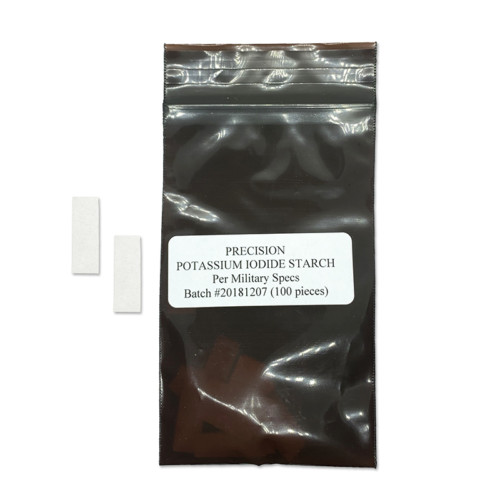This test strip detects ammonia in increments of 0, 10, 25, 50, and 100ppm. The Low Level Ammonia test strip is designed to work for the detection of ammonia (NH3/NH4+) in water. The strip is composed of two filter pads. The first filter pad acts as an absorbent and takes up the water sample. The first pad has been treated with alkaline materials. This alkaline environment converts any ammonia to the gaseous state. The second filter pad is an hydrophobic material that has been treated in such a manner that only the gaseous ammonia is absorbed by the second filter pad. The second filter pad contains an indicator(s) capable of detecting the gaseous ammonia through a change in the pH of the filter pad.
Low Level Ammonia Test Strip, 100ppm
Low Level Ammonia Test Strip, 100ppm
- Remove one test strip from the container and replace the lid.
- Dip the test strip into the solution being tested for 1 second.
- Remove test strip, and shake off excess water.
- Compare strip to the color chart after 5 seconds. Do not wait more than 10 seconds to compare to the color chart.

AMM100; AMM-100; AMM-100-1V-25
Product Specs
| SKU: | AMM-100-1V-25 |
|---|---|
| Strip Quantity: | 25 strips |
| Vial Dimensions: | 1.125″ (D) x 3.375″ (H) [29mm (D) x 86mm (H)] |
| Strip Dimensions: | 2.5" (L) x .1875" (W) [64mm (L) x 5mm (W)] |
| Weight: | 0.06 lbs [28.6 g] |
| Other: | Stored in a flip-top vial with built-in desiccant liner. |
| Shelf-Life: | 2 Years |
| Label: | Customizable water-resistant label |
Product Documentation
Can the Ammonia 0-100ppm test strip detect ammonia in the air?
The ammonia 0-100ppm test strip technically has two test pads put together. One pad absorbs the dissolved ammonia and converts it to a gas, which the second pad registers and then changes color when dipped into an Ammonia solution.
We ran a test to see if it would work to detect ammonia gas. The short answer is yes, however, the color chart is not calibrated to the correct colors for this application.
The test was performed using 4 test strips:
- Strip 1 was left as is, dry.
- Strip 2 was dipped in DI water.
- Strip 3 was left dry and held over ammonia fumes from a bottle of cleaner for just a few seconds.
- Strip 4 was dipped in DI water, then held over ammonia fumes from a bottle of cleaner for just a few seconds.
The results of the test are shown below:
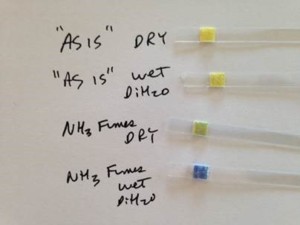
What do these strips measure? Is the reading given in Total Ammonia (mg/L)?
- The test strips are meant to detect ammonia and ammonium in water, but not combined ammonia compounds like chloramines.
- The test strip uses two pads in the test pad “sandwich” – the first pad creates an alkaline environment (pH > 11) which converts all of the ammonia/ammonium present to ammonia. The second pad employs a hydrophobic material and indicators to detect the ammonia present.
- The color chart is ppm as ammonia-nitrogen, not ammonia. There is sometimes confusion when comparing competing strips – some measure as ammonia-nitrogen (NH3-N), while others measure as ammonia (NH3). The 100 ppm as ammonia-nitrate is equivalent to 122 ppm as ammonia.
- The color charts were developed by creating ammonia standards from ammonium chloride (ACS grade). 0.19 grams is dissolved in 500 mLs of ammonia-free water. This is 100 ppm as ammonia-nitrogen. Serial dilutions produce the other standards.


